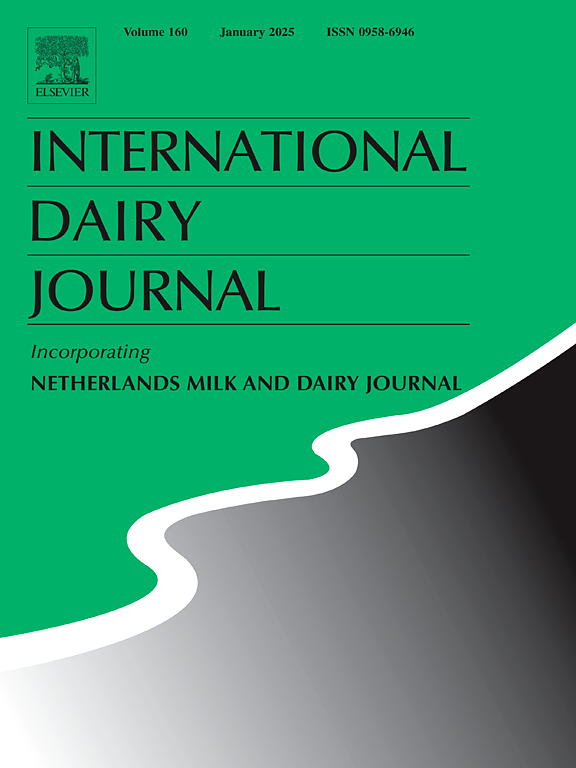从米纳斯干酪中分离的粪肠球菌3BWK产肠球菌素的抗李斯特菌作用
IF 3.4
3区 农林科学
Q2 FOOD SCIENCE & TECHNOLOGY
引用次数: 0
摘要
Minas Frescal奶酪在巴西广泛生产和消费,因其成本低,生产过程简单,以及其所含乳酸菌(LAB)的多样性而受到重视。由于其作为发酵剂的作用和生产抗菌药物的能力,如细菌素-核糖体合成的抗菌肽,乳酸菌在食品科学和技术中已经变得高度相关。本研究旨在从手工Minas Frescal奶酪中分离乳酸菌,并评估其生产细菌素的潜力。使用从帕拉纳本文章由计算机程序翻译,如有差异,请以英文原文为准。
Antilisterial potential of enterocin produced by Enterococcus faecium 3BWK isolated from Minas Frescal cheese
Minas Frescal cheese is widely produced and consumed in Brazil, valued for its low cost, simple production process, and the diversity of lactic acid bacteria (LAB) it harbors. LAB have become highly relevant in food science and technology due to their role as starter cultures and their ability to produce antimicrobials, such as bacteriocins—ribosomally synthesized antimicrobial peptides. This study aimed to isolate LAB from artisanal Minas Frescal cheese and assess their potential to produce bacteriocins. LAB isolation was performed using ten cheese samples purchased from artisanal producers in Londrina, Paraná. A bacteriocin-producing strain was isolated and identified as Enterococcus faecium 3BWK based on partial 16S rRNA gene sequencing. To optimize bacteriocin production, a production curve was established, with maximal production observed at 24 h of fermentation. The antimicrobial activity of the bacteriocin was confirmed using well diffusion assays against Listeria species: L. monocytogenes Scott A, L. ivanovii CLIST 02057, L. innocua CLIST 02052, L. monocytogenes CLIST 02044 and the antibacterial activity remained stable at various temperatures, with optimal stability at −20 °C and 4 °C with a decrease from 60 °C. Additionally, retaining activity across a broad pH range, with maximal stability at pH 8. Thus, the peptide demonstrated significant activity against Listeria spp. and promising stability for application in ready-to-eat food products.
求助全文
通过发布文献求助,成功后即可免费获取论文全文。
去求助
来源期刊

International Dairy Journal
工程技术-食品科技
CiteScore
6.50
自引率
9.70%
发文量
200
审稿时长
49 days
期刊介绍:
The International Dairy Journal publishes significant advancements in dairy science and technology in the form of research articles and critical reviews that are of relevance to the broader international dairy community. Within this scope, research on the science and technology of milk and dairy products and the nutritional and health aspects of dairy foods are included; the journal pays particular attention to applied research and its interface with the dairy industry.
The journal''s coverage includes the following, where directly applicable to dairy science and technology:
• Chemistry and physico-chemical properties of milk constituents
• Microbiology, food safety, enzymology, biotechnology
• Processing and engineering
• Emulsion science, food structure, and texture
• Raw material quality and effect on relevant products
• Flavour and off-flavour development
• Technological functionality and applications of dairy ingredients
• Sensory and consumer sciences
• Nutrition and substantiation of human health implications of milk components or dairy products
International Dairy Journal does not publish papers related to milk production, animal health and other aspects of on-farm milk production unless there is a clear relationship to dairy technology, human health or final product quality.
 求助内容:
求助内容: 应助结果提醒方式:
应助结果提醒方式:


